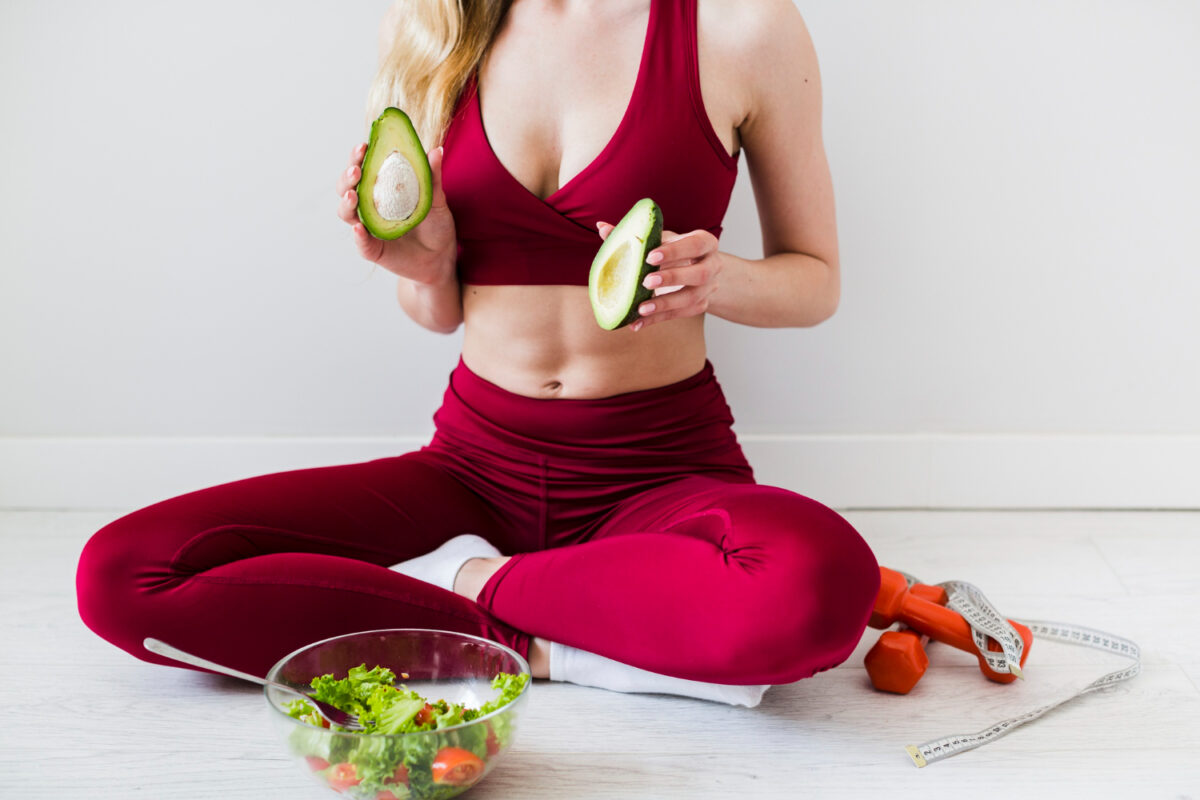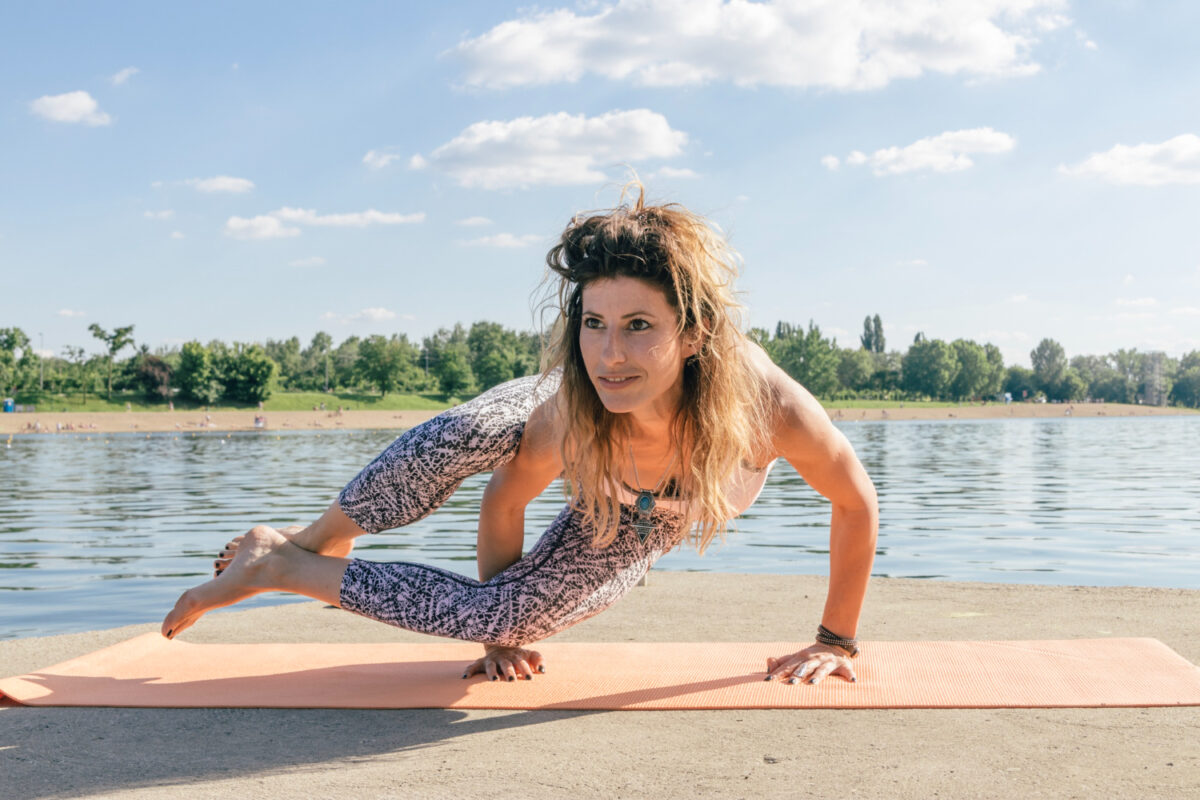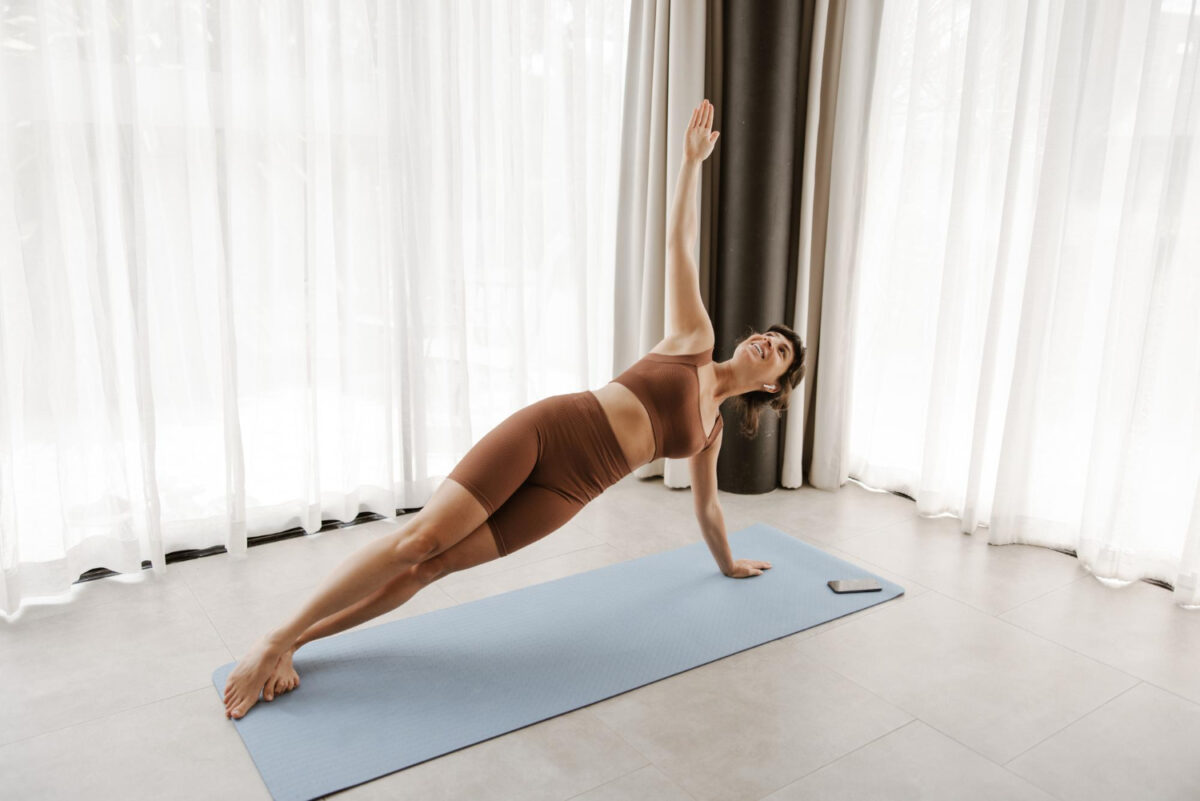Summer is a great time to start practicing yoga or continue with your routine, adapted to the heat, and you may want to do it from your vacation spot. Today from Sincronia Yoga we present you 5 postures to practice yoga in summer.
Is there a summer yoga practice?
Summer arrives and the heat, the changes in routine, the trips, the long days with extensive schedules, the vacations, the laughter, the feasts with friends, suddenly everything seems to be outward and full of energy.
According to yoga, Ayurveda and also traditional Chinese medicine, the summer season is the period of the fire element, everything is more intense, longer, more vital. Although it is a wonderful time of the year, so much excess energy can unbalance us internally: bad digestions, tiredness, loss of routines, inverted schedules, etc.
The practice of yoga can help you give solidity and stability to these days. In addition, it will bring you some extra benefits if you adapt it with postures and practices designed for the summer that alleviate all these symptoms of excess fire.
Besides, It is an excellent time to accustom your body to a yoga morning routine. The days start earlier, it's not hard to get up early and you want to practice in the cool of the morning.
Let's see 5 postures to practice yoga in summer that we invite you to incorporate into your practice.

Postures to practice yoga in summer
1. utthita parsva konasana
The first posture that we present to you is a standing posture to open the ribs and awaken the body and breathing. Is about utthita parsva konasana, the standing intercostal stretch or the extended lateral angle.
In summer it will help us stretch our legs and strengthen them, open our ribs, calm our digestions, recover a calmer rhythm and breathing.
Preparation of the pose:
- Stand with your legs wide apart (more than twice your hip width) and feet facing forward.
- You open the right foot at an angle of 90 degrees and close the left to the right about 20 degrees.
- Bend the right knee and hands to the chest in namaste.
- As you inhale roll your arms up through the sky.
- As you exhale, lower to the right to stretch the entire left side of the body with three options from low to high intensity: right hand support on the right knee, right forearm support on the right knee and thigh, or right hand support on the right knee. soil.
- The left arm seeks a deep stretch overhead without bending. If there is a lot of pain in the shoulder, place it vertical to the ceiling instead of above the head.
- One minute remains in the pose. Repeat to the left side.
2. upavista konasana
Summer is a great time to incorporate the tortoise or seated angle pose, upavista konasana. The high temperatures will make your body flexible and available to open.
Despite this, take it easy, it is a posture that requires practice and an opening in the hip that will gradually occur.
Preparation of the pose:
- Sit on the floor with your legs wide open, with no pain (or bone contact sensation) in the hip joint. Feet with the tips of the fingers towards the ceiling, if there is pain in the knees, flex them slightly or place some support between the floor and the knee.
- Find a good support of your buttocks on the floor, making the hamstrings (the final bones of the pelvis) and your pelvic floor point to the floor. You can comb your buttocks back or place a blanket that gently propels you forward.
- Move your pelvis forwards and backwards (retroversion and anteversion) until you feel the verticality of your body and spine on the base of the pelvis.
- Inhaling, raise your arms to the sky.
- Exhaling, lower your hands to the ground inside your legs and begin to pull with your fingertips, walking forward with your hands so that they pull your entire trunk.
- You go down until you are supported on your hands, elbows or the whole body depending on your flexibility.
- Do not force and make sure that the diaphragm is always open, keeping the back long and not curved.
- Keep breathing for a few minutes and when you undo it, do it slowly to avoid overstretching.
3. apanasana
The third posture that we invite you to practice in summer is one of the wildcard postures of our practice, apanasana, or the posture of the lower air or of the hug of the legs. It is an ideal position for all ages and conditions, very beneficial, comforting and pleasant.
Preparation of the pose:
- Lie on your back on the mat with your legs bent and the soles of your feet on the floor.
- Hug your left leg across your chest, keeping your back long.
- Also raise the right and embrace both. Placing one hand on each knee with arms relaxed and elbows toward the ground.
- Make sure that your spine is glued to the ground.
- Let your neck stretch bringing your chin in toward your chest.
- Make some movements: when inhaling your hands accompany the knees forward away from the chest, when exhaling they accompany them back to the deep embrace. Like a relaxing swing in the pelvis and back.
- After the movements, it remains in the position embracing both legs, you can interlock the fingers of the hands and let the arms weigh on the legs.
- Breathe in the abdomen in a relaxed and deep way for a few minutes.
In summer apanasana invites us to rest and internalize after intense and vital days, it also helps to stabilize changes and favors digestive processes by massaging all the viscera.
4. viparita karani on the wall
In this case, we recommend that you incorporate the more restorative version of this near inverted posture into your practice. viparita karani It is the position of the right angle, it is also known as the half sail or the preparatory position for the sail. It is a position that at the same time is a mudras, a gesture that allows deep interiorization.
To practice its restorative version, you can use the following material: a thick blanket to place on the floor and sit on, a block between your calves, and a strap to tie your legs so they don't open. If you do not have the material you can do it equally without.
Preparation of the pose:
- Sit on the wall on the blanket, sideways so that it is easy for you to turn as you raise your legs.
- Go up the stretched legs to the wall, leaving the buttocks on the blanket and your whole back relaxed on the floor.
- If your legs are too far from the wall, walk with your buttocks until you are about two finger widths from touching it.
- Place the block on the calves or knees without pain.
- Make a short bow with the ribbon and place it on your legs a little below the ankles. That the belt buckle does not touch your skin.
- If you have lower back problems, position the blanket so that it is on both the buttocks and lower back.
- Open your arms in a cross or cactus on the ground letting your whole body rest in the pose.
- Hold it for a few minutes.
The inversion of the legs, the hips a little above the heart, will give you a feeling of fluidity and discharge from the tips of the feet to the head. In addition, venous return is favored, improving your circulation after a day of intense heat.
5. sitari pranayama
Finally, we cannot stop recommending one of the star pranayama of the summer, the refreshing breath of sitari pranayama, the breath of calm or the tube of the tongue.
This technique reduces body temperature, induces muscle relaxation after your daily activities, restores blood pressure, stimulates the spleen and liver, and helps digestion. In addition, when you sit down to practice pranayama and silence and observation, you will enter a more leisurely state of mind, facilitating mental calm.
Pranayama preparation:
- Sit in a comfortable position with your legs crossed on the floor.
- Make sure that your back is long respecting the natural curvatures of your body.
- Leave your hands resting on your legs or lap.
- Adjust your posture until you feel stable and have good footing.
- Exhale relax.
- Stick out your tongue by folding the sides of it to form a small tube and wrap your lips around the tube. Inhale through the small opening of the tongue.
- When exhaling, do it through the nose, collecting the tongue towards the palate to be able to close the mouth.
- You can accompany your breath with a slight vertical head movement, as if you were saying yes. Inhale from bottom to top, exhale from top to bottom.
- Repeat for 12 breaths or a few minutes.
- At the end, remain silent and observe the sensations of the tongue, teeth and palate.
We invite you to continue your summer yoga practice with us at Sincronia Yoga.
Silvia Gallego
Yoga teacher, author and editor of breathing books





